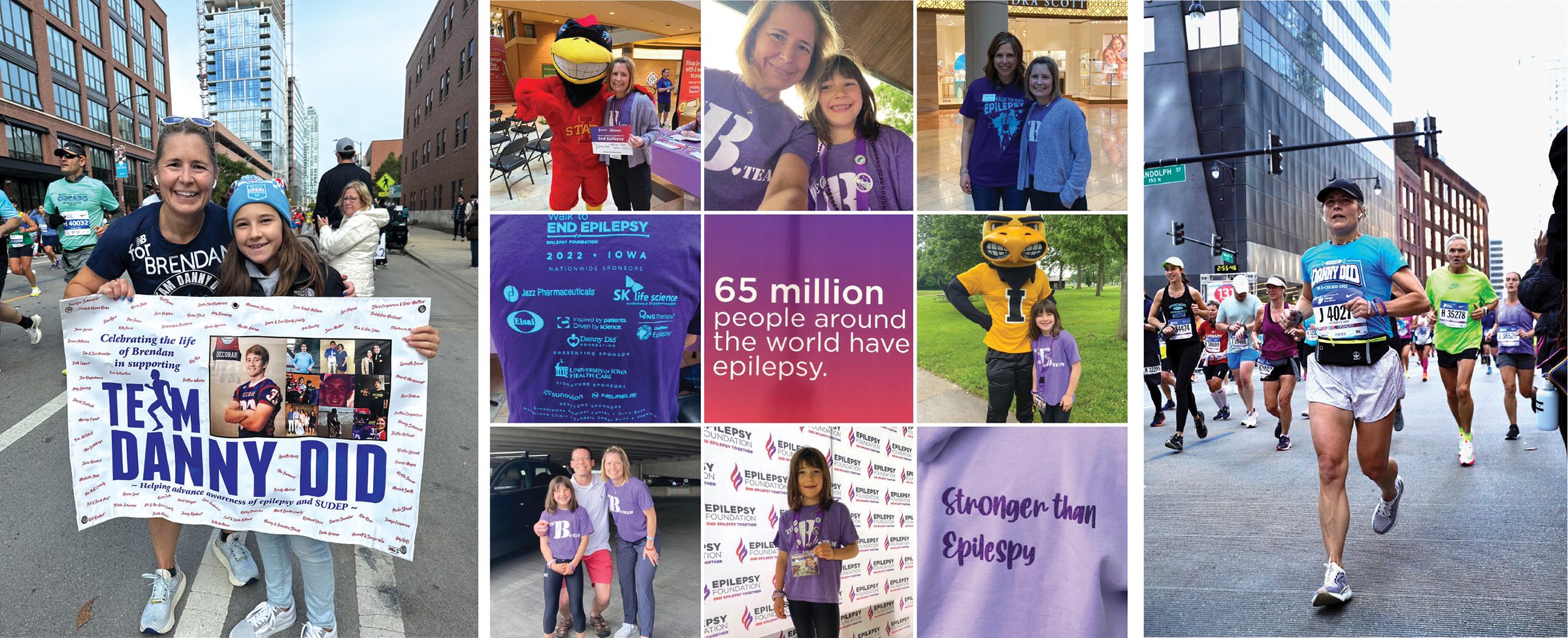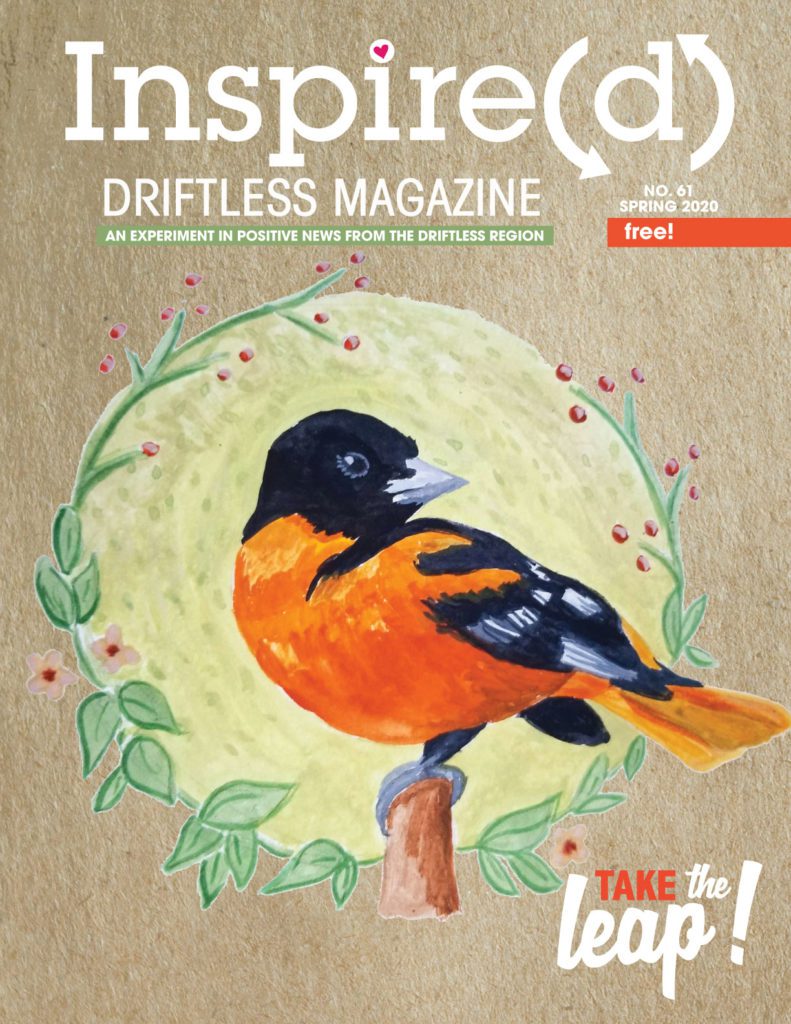Bike-Minded: Driftless Region Biking

By Sam Wiles
When people commonly think “Iowa,” they think corn, farms and uninterrupted flat land. Maybe even the well-known statewide road ride, Ragbrai. But mountain biking? Come on.
We’ll tell you a secret though. There’s a unique spot in the Midwest called the Driftless Region, and for mountain biking, it’s ideal. Fast rising bluffs and thick wooded areas provide a place for trails that challenge even the most expert of mountain bikers, and the flowing rivers and streams provide the perfect backdrop for a great ride.
Mountain biking began in a more conventional location: California. During the 1970s mountain biking founding fathers such as Joe Breeze, Gary Fisher, Charlie Kelly, Charlie Cunningham, Keith Bontrager, and Tom Ritchey converted cruisers and balloon-tire bicycles into human-powered machines that could traverse all sorts of terrain. Mount Tamalpais, better known as Mt. Tam, is where they conducted their experimental downhill riding. They would have the bike delivered to top of the mountain, then would race to the bottom.
Things have evolved a fair amount since then, and the trend has spread. It took awhile for it to trickle in from the coasts though, let alone to the Midwest. Yet somehow, tiny Decorah in Northeast Iowa was at the head of the pack, even though not everyone around “got it.”
“I had literally one of the first mountain bikes in the state of Iowa,” says Richard ‘Deke’ Gosen, owner of Oneota River Cycles bike shop in Decorah. “There was a misconception among not only city officials but people who owned them at first. Remember those mountain dew commercials where those guys were ‘doing the dew’ and tearing everything up? People in the community thought that’s what we were doing.”
So mountain biking was banned from the Decorah parks system. Many people thought it meant motorized dirt bikes producing air and noise pollution. When the ban was lifted in 1990, it was for the first Decorah Time Trials, and riders could only ride within a three-day span, one day on either side of the Time Trials race day. Gradually local mountain biking enthusiasts began to earn the trust of the community, and in 1993 the ban was lifted and preliminary construction on the singletrack trails began.
“[That year] it became okay to bike on the Decorah trails. It taught us something: that we had to become valuable enough to the community. We have done that through a lot of activities, starting with building the trails and promoting mountain biking,” says Gosen.
The pioneering race was the first and is now the longest-running in the state of Iowa. This year marks the 20th anniversary, and fittingly, 2010’s time trials will be featured in the Iowa Mountain Bike Racing Series for the first time, helping to put Decorah on the map for more mountain bikers and leading to wider publicity in general for the race.
The annual race is grueling one, winding through Decorah’s challenging singletrack. Racers do the route in laps, and how many laps depends on the biker’s skill level. It’s different from other mountain biking races because rather than starting in a pack (which would be impossible on the narrow trails) racers are released in intervals, the timer being the only gauge on the competition. Finally, the route is kept a secret until the day of the race.
“There’s a lot of speculation, and that’s part of the fun,” says Gosen, who picks the course each year.
And to make things even more unpredictable, Time Trials happen rain or shine. Historically, it’s been the former.
“The weather has always been bad. I’d be hard pressed to remember when the weather wasn’t terrible,” says Gosen. “But we ride no matter what.”
The trails are muddy this time of year, making the ride more difficult yet. Tires can get stuck in thick, black mud bogs or slide off of what’s already often tricky terrain.
Decorah mountain biking has truly come a long way in the past two decades. In the spring of 2003 – with the help of Gosen and fellow mountain bikers Jesse Reyerson, Jeff O’Gara, Ben Shockey, and a handful of others, Decorah Human Powered Trails (DHPT) was formed. Now a division of the Decorah Parks’ system, DHPT has built and continues to maintain over 17 miles of trails in the Van Peenen, Palisades, Ice Cave and Dunning’s Spring park systems.
“It came out of the need to consolidate a variety of user groups that were all involved with (off-road) trail development, and that included runners, walkers, and hikers. We were all kind of working together but not organized, and by all moving together and working on the same projects, it also gave us a little credibility with the community and the city,” says Gosen.
And no one in Decorah confuses dirt bikes with mountain bikes any more.
“I’ve heard a lot of people talk about how special Decorah is, but I think there are a lot of special people who live in Decorah,” says Jesse Reyerson, DHPT president. “It is probably pretty rare to have a town of 8,000 people support two bike shops anywhere else in the state.”
But even so, Decorah isn’t plastered all over MountainBike.com or Cycling Magazine. In spite of 500 acres of park and more than 17 miles of off-road trails, it isn’t rated as one of the 100 best cities for mountain biking by cycling site Singletrack.com.
That might be the best part.
“You can do any kind of cycling you want. It’s not just a road cycling community; it’s not just a mountain biking community. And it’s fantastic mountain biking that no one seems to know about so there’s virtually no traffic,” says Travis Greentree, owner of Decorah Bicycles – the second of the two bike shops in Decorah. “Five minutes away from town you can completely get away. Plus there’s enough mileage out there to keep finding new things to do, new places to ride, new obstacles.”
But don’t think any obstacle on the trail was a lack in maintenance. It is most likely there for a reason.
“If a log falls in the path, we just leave it. It makes for a new challenge,” said Decorah biker Ben Shockey. The challenge is all part of the enjoyment for mountain bikers. They revel in constant tests of unexplored terrain and natural surprises.
“There’s also not a one way direction on any trail so you can ride them any way you want. They’re so intertwined out there; you could never ride the same one twice and never run into the same person,” says Greentree.
This labyrinth of twists requires a means of navigation for the newcomer (and sometimes even the frequent rider). Gosen is at the helm of the DHPT team that helps map Decorah’s mountain bike trails. He had used aerial photography in the past and gradually segued to more sophisticated GPS systems to make particularly detailed sets of maps. He has also been behind a move to give up paper maps, as new trails are created often. The e-maps are available online at www.ExploreDecorah.com.
“Our maps are useful for trail users but we’ve also helped the city define their borders, with planning bike routes and community centers. Plus our races and non-competitive events bring in thousands of people every year. We’ve given away 5500 trail maps. Someone is clearly using them,” Gosen says.
And some of those people are also clearly not from around here. The fact that biking draws tourists is no secret. Decorah plays host to not only Time Trials annually, but also The Summer Sizzler, The Night Shift Night Race, and summer mountain bike festivals such as Big Wheel Ballyhoo and The Dirt Burger.
Locally it has garnered some great traditions too. Several area mountain bikers partake in Tuesday’s ‘Night Rides.’ Each ride lasts for an hour and a half, and allows for mountain bikers to get some time on the trails in the midst of busy schedules.
“Night riding is a lot of fun and a different kind of ride than hitting the trails during the day time,” Ryerson says. “It is easier to focus on exactly where you are placing your front wheel, because it is about the only thing you can see.”
The members of DHPT always emphasize that the mountain biking community is a social one. Each Tuesday night ride ends in a celebratory beer. The Spring Time Trials end in an award ceremony at T-Bock’s Bar and Grill on Water St.
“The social aspect of each race is awesome,” says Decorah biker Ben Shockey. “We’re pretty tightly knit. You get to know a lot of the same people.”
Shockey has organized the most physically demanding of cycling experiences, ‘Spring Training in Decorah.’ The event consists of a two-day ride throughout gravel and off-road trails of Northeast Iowa. This year from March 11 to March 13, Shockey and four others rode 203 miles in 48 hours, with 18 hours of actual ride time – a grueling stretch by any measure, especially over rough terrain. The group suffered through cramping, back spasms, and dehydration, all common with this type of endurance riding.
Shockey documents the event on his blog, SpringTraininginDecorah.blogspot.com with photos and daily updates during the ride. He is one of many in the biking community to utilize the online medium to talk about biking. Reyerson operates BikeDecorah.com, a sight with links to other biking sites, biking blogs, and maps of area trails. The BikeDecorah blog, operated by a number of local mountain bike enthusiasts, including Reyerson and Shockey, documents the activities of DHPT. The viral aspect of DHPT also helps connect the group to other parts of the Driftless Region – Northeast Iowa, Southwest Wisconsin and Southeast Minnesota – that is primed for biking.
Marty Larson operates The Prairie Peddler blog that highlights trails in Southwest Wisconsin.
“From a purely physical perspective, the terrain in the Driftless Region is fantastic for riding. Frequent scenic vistas, tough rock sections, smooth flowy tracks. We’ve got it all here,” says long-time biker Larson. “I’ve long maintained that the riding – both road and mountain – we have here in [our region] is some of the best in the country.”
Whether they consider it a sport, an activity or a pastime, for many, biking is more than pedals and handlebars and helmets. It’s about personal challenges, physical wellbeing and communal existence. It’s much more to people like Marty Larson.
“For me, cycling makes LIFE enjoyable. It gives me purpose; it drives me to be better at everything I do, from fatherhood, to being a better husband,” he says. “I want to improve cycling opportunities for everyone around so they can maybe get that feeling that I do. That euphoric joy of being in the moment on the bike.”
Sam Wiles had a great time talking to the bikers of Decorah and the region, and even did some firsthand research on his own bike. He’s thinking his next article will be titled, ‘The Joys of Gold-Bond Medicated Powder.’
Get on the Trail!
In Decorah: Over 17 miles of single track trails! Beginner/Intermediate: River Trail & Twin Springs. Intermediate/Advanced: Van Peenan, Ice Cave, Palisades. There are also endless miles of gravel roads to ride in the region, and some nice mid-distance rides to scenic destinations & watering holes including Bluffton, Ridgeway, Sattre, etc. Organized rides most Tuesday evenings for those with some experience, call Oneota River Cycles for more information. Beginners & beyond ride meets every Sunday afternoon at Decorah Bicycles (next to the Whippy Dip!).
www.bikedecorah.com, http://decorahbicycles.com/, http://www.exploredecorah.com/
In Prairie du Chien: La Riviere Park has roughly 8 miles of trail. Difficulty varies from wide, grassy trails that flow around the south edge of the park to horse and hiking singletrack. Some good climbs, sandy sections, and rocky areas. http://theprairiepeddler.blogspot.com/
Pikes Peak State Park above Mc Gregor has a single trail there from the lower upper parking lot down to Point Anne and down to the lower parking lot. Not terribly lengthy, but a scenic ride, especially in the spring.
Harpers Ferry: 8000 acres of the Yellow River State Forest. 20+ miles of trails with lots of ‘double track’. Lots of climbs and beautiful views.
Wyalusing State Park just to the south of Prairie du Chien has beginner trails. New intermediate trails being built this summer on Maple Ridge.
La Crosse: Lots of great single track and well built trails. Check out www.humanpoweredtrails.com!
Iowa City: Sugar Bottom, more info at www.icorrmtb.org













